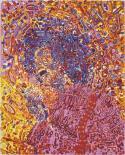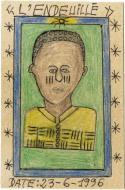Art Of The Day Weekly
#481 - from 13 July 2017 to 13 September 2017
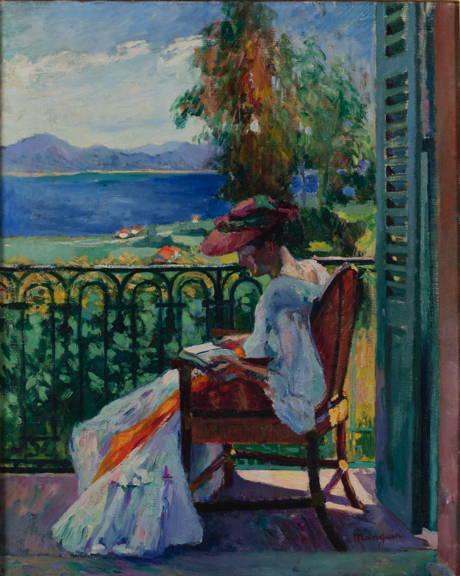
Henri Manguin, Jeanne on the balcony, Villa Demière, 1905. Oil on canvas, 81 x 65 cm, Private Collection © All rights reserved / Photo : Fabrice Lepeltier © ADAGP, Paris, 2017 (exhibition at Musée des impressionnismes, Giverny).
Our next issue will appear on 14 September 2017. Have a nice summer!
10 exhibitions for the summer
One is rarely bored when the sun is shining. As usual, there are dozens of major cultural events to choose from, be it the Rencontres photographiques d’Arles or Photo España. This year though, like the occasional alignment of certain stars, the year offers a wider choice than usual. Maybe this is due to the coincidence of the Biennale of Venice, documenta in Kassel (every five years) and Skulptur Projekte also at Münster (every ten years). Not to mention all the new museums there are to discover or to look at from a different angle, in Nantes, Perpignan or London. Yes, absolutely: the Victoria & Albert has a brand new, spectacular entrance designed by Amanda Levete. Last but not least, the major exhibitions are not closing for the summer, and her we give you a nomadic selection, from Barcelona to Rome, from the Forbidden City to Black Power, etc.
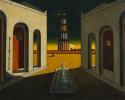
Giorgio de Chirico, Piazza d'Italia con fontana, ca 1968, oil on canvas, Fondazione Giorgio e Isa de Chirico © Giorgio de Chirico, VEGAP Barcelona, 2017.
A return of de Chirico
BARCELONA – He made the red towers of the castle of Ferrara world famous, while inventing an appendix to surrealism, metaphysical painting. Marble ephebes and wood mannequins wait patiently on deserted squares, enhanced by cutting shadows. Giorgio de Chirico (1888-1978) is a classical artist of the 20th century. But when he came back, decades later, with the same ‘official’ subjects, he caused a couple of headaches for many experts. His Piazze d’Italia are somewhat late – more contemporary of May 68 than of the Russian revolution -. But we must admit the artist uses his repertoire to the fullest. Ill-known sculptures from the forties, portraits, and drawings complete this retrospective of nearly 150 works.
• El mundo de Giorgio de Chirico. Sueño o realidad at Caixa Forum, from 19 July to 22 October 2017. Catalogue €30.
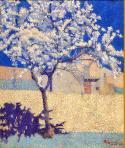
Achille Laugé, The Flowering Tree (L'arbre en fleur), 1893, oil on canvas, 59.4 x 49.2 cm (23 3/8 x 19 3/8 inches). Private collection ©Achille Laugé, VEGAP, Bilbao, 2017
Paris 1900
BILBAO - Paris at the end of the 19th century continues to be a favorite. We are always ready for another Toulouse-Lautrec, no matter how often we have seen his work. Yet it is not the famous clubfoot, here with his famous lithographs (or Bonnard for that matter), which are the most interesting part of the exhibition. The event actually gives the opportunity to see lesser known works as they come from a private collection. We will easily be charmed by Redon’s charcoals and his bright pastels, such as the magnificent Barque, one of his favorite themes, on a molten blue sea, some works by Maurice Denis in his youth, at the time of Pont-Aven, shrouded in an airy mysticism that would become more insistent with time. There is a group of talented artists, usually placed in the second row among the Nabis or the neo-impressionists, and consequently often forgotten: Paul Ranson, Maximilien Luce, Georges Lacombe, Achille Laugé, Charles Angrand. A large scene of Montmartre by Louis Anquetin guides us into the seedy atmosphere of a cabaret we imagine filled with the vapors of absinthe.
• Paris fin de siècle at the Guggenheim Bilbao, from 12 May to 17 September 2017. Catalogue Columbus Museum of Art, 164 p., €30.
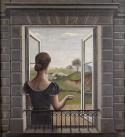
Paul Delvaux, The Window, 1936, oil on canvas, 110 x 100 cm. Collection Musée d’Ixelles, Bruxelles, photo Mixed Media © Fondation Paul Delvaux, St Idesbald, Belgium / ADAGP, Paris 2017.
Delvaux, the Belgian surrealist
ÉVIAN - Paul Delvaux (1897-1994) lived to be (almost) 100 years old. But most importantly he was one of the leading artists in Belgian surrealism, which is not limited to Magritte but on the contrary grouped together a number of remarkable personalities, such as Scutenaire or Nougé. His life was drab: he was born near Liège, and died in Furnes, at the opposite end of Belgium without ever having taken a major trip between the two. But his interior world was strangely exotic. Castles and classic Italian style parks were peopled by nude women, skeletons, columns and statues with broken arms. One will see influences by Chirico, Ernst, and Tanguy of course. But there is a touch of his own, a taste for stations and trains, windows, long perspectives. The exhibition is based on the rich, private collection of the Ghêne spouses, and it allows us to follow the artist’s complete itinerary. A major work, l’Incendie (1935), which Delvaux had cut in two, is presented here, whole: the two halves have been brought together and should remain so, as the collectors have each promised to donate their half to the Musées royaux des beaux-arts, which have the counterpart.
• Paul Delvaux, le maître du rêve at the Palais Lumière, from 1 July to 1 October 2017. Catalogue Somogy, 216 p., €35.

Agnieszka Polska, I am the Mouth, 2014, HD-video 5:45 min, Still, © The Artist, courtesy ŻAK | BRANICKA.
What is peace?
FRANCFORT – War and peace go hand in hand, as Tolstoy showed in his famous novel. It is easy to dedicate an exhibition or a book to war as it is always full of crashes and clatter, of events, attacks, and heroic exploits. But what can be done to show peace? How can one define that state, or rather the process? To deal with this permanently current subject, with this ideal that is systematically undermined, the Schirn Museum has chosen to give the floor to contemporary artists, in very different registers, from Ulay (born in 1943), the former companion of Marina Abramovic, to video artist Agnieszka Polska (born in 1985) without forgetting Michel Houellebecq (born in 1958).
• Peace at the Schirn Francfort, from 30 June to 24 September 2017.
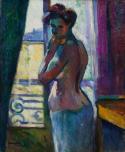
Henri Manguin, In Front of the Window, rue Boursault, 1904, oil on canvas, 61 x 50 cm. Private collection © All rights reserved. Photo : Fabrice Lepeltier © ADAGP, Paris, 2017.
Manguin, a great Fauvist artist
GIVERNY – There are superstars among the Fauvist artists, such as and above all, Matisse. Then there is Derain, Vlaminck, and Dufy; followed by more modest ones such as Camoin, Puy, Valtat or Manguin. The exhibition, on Monet’s sector, allows visitors to rediscover the latter (1874-1949), who was very present at the Salon d’automne of 1905, in section VII and his famous « cage aux fauves », the expression art critic Louis Vauxcelles used to dub the movement. From his shared time in the workshop of Gustave Moreau with Matisse and Marquet to the discovery of Saint-Tropez in 1904, all the way to the links with Vollard or the collectors and spouses, the Hahnloser, this small retrospective turns out to e very complete on the years between 1900 and 1910, a true chromatic explosion that lines up nudes, landscapes, and still lives.
• Manguin, la volupté de la couleur at the musée des Impressionnismes, from 14 July to 5 November 2017.
Black Power
LONDON - Superman never saved any black people is the sub-title for a painting by Barkley Hendricks. This clarifies the objective of this exhibition that explores the way black art, African-American art, has been one of the leading edge tools of the civil rights movement starting with the famous march on Washington in 1963. Benny Andrews, Faith Ringgold, and Betyee Saar are some of the artists presented in this exhibition that successfully completes Color Line – the exhibition shown at the Quai Branly museum, in Paris in the fall of 2016. Martin Luther King, Angela Davis, Mohamed Ali, Aretha Franklin, and the Black Panthers are obviously in the background.
• Soul of a Nation at the Tate Modern, from 12 July to 22 October 2017.
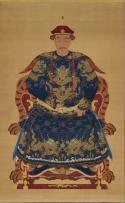
Portrait of Shang Kexi (dec.1676). Ink and colours on silk, Qing dynasty,(1644-‐-‐1911), 248,9×117,5 cm (image), 386,7×140 cm (rouleau) ©Freer Gallery of Art and Arthur M. Sackler Gallery, Smithsonian Institution, Washington, D.C
Over the Forbidden City
MONACO – As often happens when one deals with China, figures alone make us dizzy. In this case, he reigned for 59 years, had a horse farm with 20 000 animals for his escort, and wrote 42, 000 poems. All this refers to Qianlong (1736-1795), the sovereign who was a contemporary of Louis XV, and who personifies the apotheosis of the Qing dynasty. He is the main character of the exhibition that temporarily transfers a few treasures from the Forbidden City to the beaches of the Mediterranean. From the handling of arms to the status of the concubines, from the paintings on scrolls to the Jesuit engravings, from unique objects (sound stones, a Manchu throne in deer antlers and rose wood, an enamel elephant), they all talk of the daily life at the hart of these 72, 000 m2 that encouraged jealousies and fantasies. The most surprising item are the photos of the end of the reign, ordered at the beginning of the 20th century by Cixi, the pitiless dowager queen. Everything seems static- like the boat that glides through a sea of lotus – and yet everything changes so quickly. The revolt of the Boxers and the “55 days of Beijing” in 1900, the death of Cixi in 1908 after 47 years of reign, the end of the dynasty in 1911, and of the Empire in 1912.
• La Cité interdite at the Grimaldi Forum, from 14 July to 10 September 2017. Catalogue Skira, 296 p., €35.
A selection from Africa
PARIS - Business man Jean Pigozzi, the heir of the Simca automobile dynasty, asked André Magnin, the associated curator of the pioneer exhibition Les Magiciens de la terre at the Centre Georges Pompidou in 1989, to take twenty years of constant travelling to Africa to dig out the most original self-taught artists South of the Sahara. The result is remarkable. A coherent and impressive group, from one tip of the continent to the other, that combines artists who are now well established such as Chéri Samba, Frédéric Bruky Bouabré, and Pascale Martine Thayou, and others who are still in the background, but who use materials and colors with great, contagious jubilation.
• Art/Afrique, le nouvel atelier at the Fondation Louis Vuitton, from 26 April to 4 September 2017. Catalogue Dilecta, 272 p., €40.
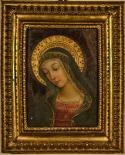
Bernardino di Betto, known as Pintoricchio, Madonna, fragment from the lost fresco Divine Investiture of Alexander VI, c. 1492-1493, fresco with 17th-century frame, 39,5 x 28, 5 x 5 cm. Private Collection.
The Borgia, intimate
ROME – Does this beautiful Madonna have the features of Giulia Farnese, the young mistress of Pope Borgia Alexander VI (1492-1503)? It was believed so for centuries, based on the opinion of Vasari. The permissive and corrupt Pontiff, a great lover of art, had commissioned Pinturicchio with a cycle of frescoes that continue to decorate the Borgia apartments. One the other hand, the painting of the pope praying in front of the Madonna and her son was dismembered, as it seemed obscene to give the traits of his concubine to a divine figure. Fortunately, a conscientious painter, Pietro Fachetti, had made a copy. The fragments have been brought together in this exhibit after many centuries, and they show that this rumor of the 17th century was false information.
• Pintoricchio, pittore dei Borgia at the Musei Capitolini, from 19 May to 10 September 2017. Catalogue Gangemi, 192 p., €30.
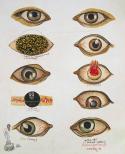
Yüksel Arslan, Arture 385, L'Homme XXVI, Hallucinations, 1988. Mixed mediae, 34 x 27,5 cm. Collection Arslan. Photo : Cengiz Tacer. © Yüksel Arslan, 2017.
Breton, the boss
VILLENEUVE-D’ASCQ – We continue to regret the breaking up of the André Breton collection, and its ensuing sale that created a lot of noise in 2003 in Paris. We all know the boss of surrealism was a curious, and unrepentant character, who brought together Kachina dolls, art brut and natural curiosities in his cabinet of curiosities. The museum brings together some of the artists for which he had a particular weakness, from Aloïse to Victor Brauner, from Augustin Lesage to André Masson. Separately, a room is dedicated to Yüksel Arslan, a Turkish artist born in 1933, and who Breton invited to take part in his exhibition E.R.O.S in 1959 –which had no success- , and who settled in France in 1961 to produce surprising and intelligent work, of which the drawings fill dozens of notebooks of a never-ending diary.
• André Breton et l’art magique at LaM, from 24 June to 15 October 2017. Catalogue €9.

